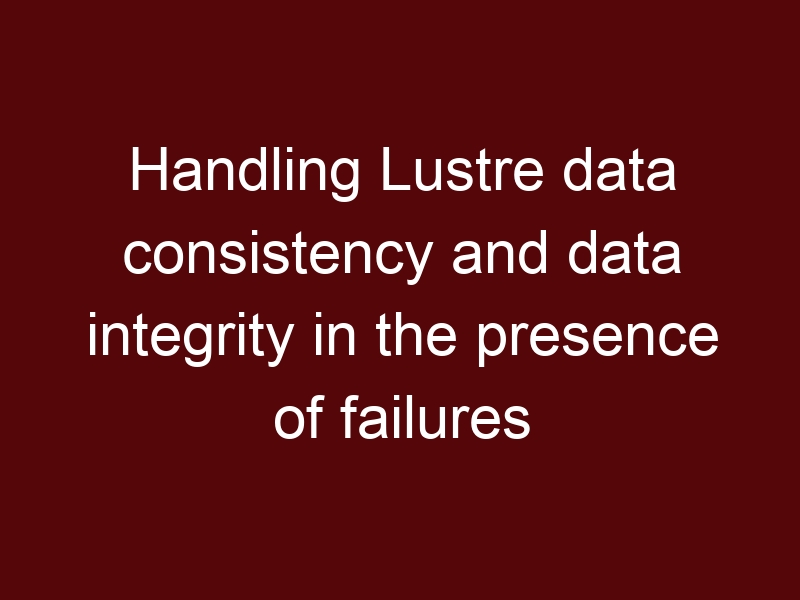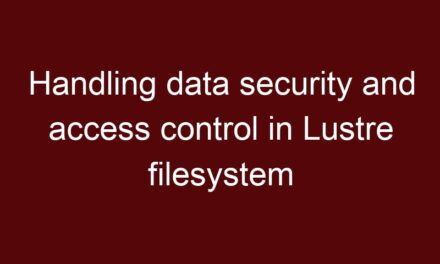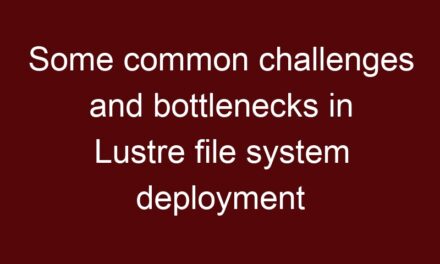Lustre employs various mechanisms to handle data consistency and data integrity in the presence of failures, ensuring that data remains reliable and consistent even when failures occur. The Lustre file system is designed to be fault-tolerant and resilient, providing data protection and recovery capabilities. Here’s how Lustre achieves data consistency and integrity:
- Distributed Data and Metadata: Lustre distributes both data and metadata across multiple Object Storage Targets (OSTs) and Metadata Servers (MDSs), respectively. This distribution ensures that no single server becomes a single point of failure. In the event of a server failure, the remaining OSTs and MDSs continue to serve data and metadata requests, maintaining system availability and data access.
- Data Redundancy (Optional): Lustre provides an option for data redundancy through the use of replication or RAID (Redundant Array of Independent Disks). Administrators can configure OSTs to store multiple copies of data on different storage devices or servers. If one OST fails, the redundant copies on other OSTs can be used to recover the data, ensuring data availability and data integrity.
- Journaling: Lustre uses journaling to log metadata operations before they are committed to disk. This ensures that metadata updates are reliably recorded, even if the system crashes or experiences a failure during the update process. In case of a crash, Lustre can replay the journal to bring the file system back to a consistent state.
- Transaction Commit Protocol: Lustre employs a transaction commit protocol to ensure atomicity and consistency during metadata updates. Before committing a metadata update, the MDS must obtain the appropriate locks from the Distributed Lock Manager (DLM). This ensures that metadata changes are made in a coordinated and consistent manner across distributed MDSs.
- Data Integrity Checks: Lustre performs data integrity checks using checksums or similar mechanisms. When data is written to Lustre, it can be accompanied by checksums that are stored alongside the data. During subsequent reads, Lustre verifies the checksum to detect any potential data corruption or bit flips.
- Data Recovery: In the event of a failure that leads to data corruption or data loss, Lustre can leverage data redundancy and parity information to recover the lost or corrupted data. For example, if a disk fails in a RAID configuration or a redundant copy of data exists on another OST, Lustre can reconstruct the lost data from the available copies.
- Replication and Quotas: Lustre supports replication and quota management to ensure data availability and resource management. Replication allows administrators to create redundant copies of data, while quotas help manage and restrict resource usage to prevent data overloads.
By employing these mechanisms, Lustre ensures that data remains consistent and intact even in the presence of hardware failures, system crashes, or other unexpected events. The fault-tolerant and data protection features of Lustre make it a reliable choice for data-intensive and critical applications, especially in high-performance computing and large-scale storage environments.





